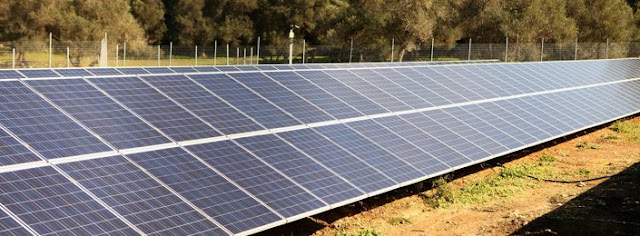Types of batteries for solar power plants
Installations for generating electrical energy using solar panels are necessarily equipped with rechargeable batteries. Both new and used batteries are suitable for this, which can be used with solar cells.
Site - https://solarpanelsforsalecheap.com
If you are buying a new battery, then first decide on the required characteristics:
operating conditions - operating temperature and whether the battery needs a separate room, ventilation, temperature conditions, etc.;
Battery Type;
price;
life time.
Battery types:
There are several types of rechargeable batteries:
Starter;
Traction (Gel and AGM);
Filler (OPzS);
Sealed (OPzV);
Lithium Iron Phosphate (LiFePO4).
Starter batteries are used exclusively in cars, their task is to briefly supply a large current to the car's starter. But if, for example, you already have unnecessary car batteries, then for the first time it makes sense to use them (although their service life in deep discharge systems will not be very long) And since these batteries are not equipped with a gas recirculation system, then they should be placed in a separate, well-ventilated non-residential area.
As part of a solar power plant, that is, in a cyclic mode in which discharge and charge occurs daily, it is recommended to use only special deep-discharge batteries (GEL, AGM, OPzS, OPzV or LiFePO4)
Gel (GEL) batteries are not demanding in additional maintenance and they do not need forced ventilation of the room. They are characterized by a long cycle life (400 to 1200 cycles). The cost of rechargeable batteries is not much higher than the cost of batteries using AGM technology.
AGM batteries also do not emit any gases during operation. In addition, they are slightly cheaper than batteries with GEL technology, but also the number of recharge cycles, which means they have a shorter life (from 300 to 800 cycles). The advantages of such batteries in relation to spruce batteries include a lower cost and less dependence on negative temperatures. Therefore, if you choose between AGM and GEL batteries and at the same time the average temperature in the place of its operation is below zero, then the choice in favor of AGM will be more reasonable.
Two-volt flooded (OPzS) and sealed (OPzV) batteries are characterized by the longest service life, as well as good performance under any, even the most severe operating conditions. These batteries have been specially designed for use in alternative energy systems with daily discharge cycles. The cycle life of these batteries is about 5000, and the total operating time is up to 25 years. At the moment, no technology can boast such a long service life (even LiFePO4). Sealed OPzV batteries also do not emit any gases during operation and do not require maintenance, but OPzS should be installed in a separate, well-ventilated non-residential area and regularly (once twice a year) monitor the electrolyte level. These batteries (especially OPzS) are very well tolerated in subzero temperatures, so if you need reliable, long-lasting batteries in low temperatures, then this is exactly what you need. The only drawback of these batteries can be called their cost (2-3 times more expensive than GEL and AGM) batteries, but given their reliability and service life, in the end they will still cost you much cheaper.
Lithium Iron Phosphate (LiFePo4) is a battery with a high specific energy density and a service life of up to 20 years, which is the ideal solution for storage systems of any capacity. Compact and scalable with a modular 19 ”rack design, it can easily expand system capacity from a few kWh to megawatt scale.
The integrated BMS protects and charges each battery cell individually, thus delivering over 6,000 charge / discharge cycles at 90% DoD.
Energy storage systems based on lithium iron phosphate batteries are equally well suited for storing electricity obtained both from renewable sources to ensure autonomy, and from traditional networks for backup and compensation of power peaks, by adding energy stored in the battery. The system allows users to automatically unplug and switch to battery power during peak hours, providing greater flexibility and control over energy use.
Of the advantages: Ultra-short charge / discharge time (only one hour), high charge / discharge currents, does not emit any gases during operation or storage, a huge number of recharge cycles (3000 cycles at a depth of discharge of 50%), calmly transfers discharges to a depth of 90 and even 100%. Also, these batteries have significantly less weight and size (approximately two times) in comparison with all the batteries listed above.



Комментарии
Отправить комментарий